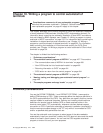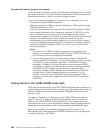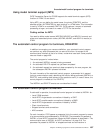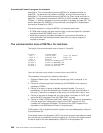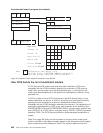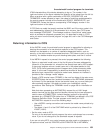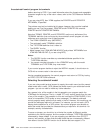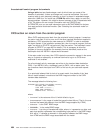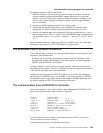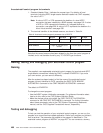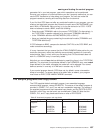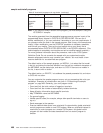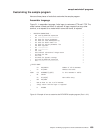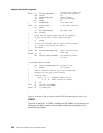bisynchronous devices, which do not support QUERY, one approach is to make the
definition as straightforward as possible, with no special features.
If you need special models for special cases, you can use a simple mapping of, for
example, NETNAME (generic or specific) to AUTINSTNAME. Your control program
could go through a table of special case NETNAMEs, choosing the specified model
for each. The default model would be used for any terminal not in the table. (Note
that the list of models presented to the control program is in alphabetical order with
one exception which is described in the notes to Table 41 on page 770.)
Setting the TERMINAL name
The TERMINAL name must be unique, and one through four characters long. For a
list of the acceptable characters, see the
CICS Resource Definition Guide
. (The
TERMINAL name is the identifier CICS uses for the terminal. The NETNAME is the
identifier VTAM uses for the terminal.)
You may have transactions that depend on the terminals from which they are
initiated, or to which they will be attached, having particular TERMINAL names.
Some transactions are restricted to particular terminals and others behave in
different ways, depending on the terminal. In some cases, the transaction may
gather statistics about terminal use, using the TERMINAL name as a reference. The
TERMINAL name may have meaning to those managing, using, or maintaining the
network: it may, for instance, denote geographical location or departmental function.
The NETNAME is really more suitable for these purposes than the TERMINAL
name, because it is eight characters in length. If you can use the NETNAME, the
TERMINAL name can be randomly assigned by the autoinstall control program, and
it does not matter if a terminal has a different TERMINAL name every time the user
logs on. The control program is required, in this case, only to make the TERMINAL
name unique within the system in which the terminal is to be autoinstalled. If the
control program attempts to install a TCT entry for a TERMINAL name that already
has a TCT entry, the installation is rejected, despite the fact that the terminal is
eligible and a suitable model has been found. (By contrast, if the NETNAME
already has a TCT entry, the terminal uses it and autoinstall can never be invoked.)
The default autoinstall control program creates the TERMINAL name from the last
four nonblank characters of the NETNAME. This may not satisfy the requirement for
uniqueness. One way of overcoming this problem is to use the EXEC CICS
INQUIRE command from the control program, to determine whether the TERMINAL
name is already in use. If it is, modify the last character and check again.
However, you may be in a situation where you must continue to use unique and
predictable TERMINAL names for your terminals. Your control program must be
able to assign the right TERMINAL name to each terminal, every time the user logs
on. Two possible approaches to this problem are:
v Devise another algorithm to generate predictable TERMINAL names from
NETNAMEs
v Use a table or file to map TERMINAL names to NETNAMEs.
Devising an algorithm avoids the disadvantages of using a table or a file, but it
might be difficult to ensure both uniqueness and predictability. If some of the
information in the NETNAME is not needed by CICS, it can be omitted from the
TERMINAL name. An algorithm is probably most appropriate in this situation.
the autoinstall control program for terminals
Chapter 10. Writing a program to control autoinstall of terminals 493



